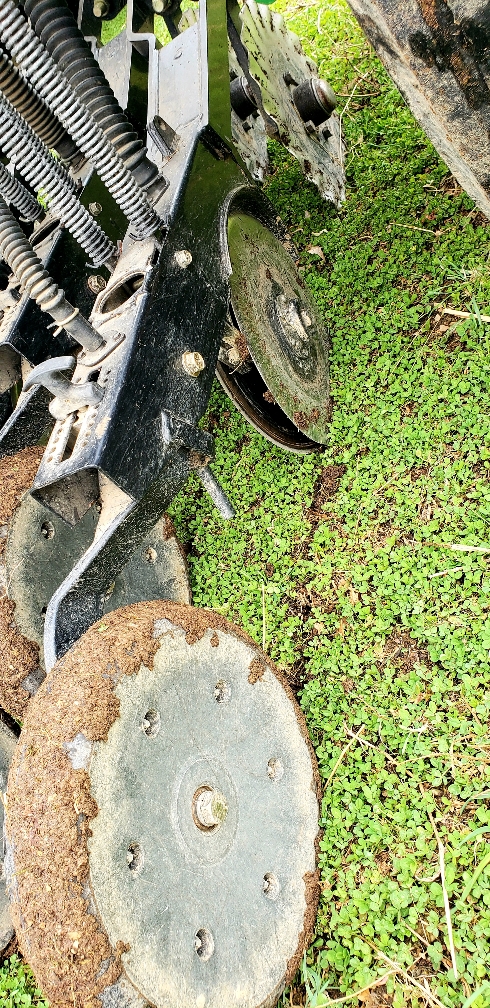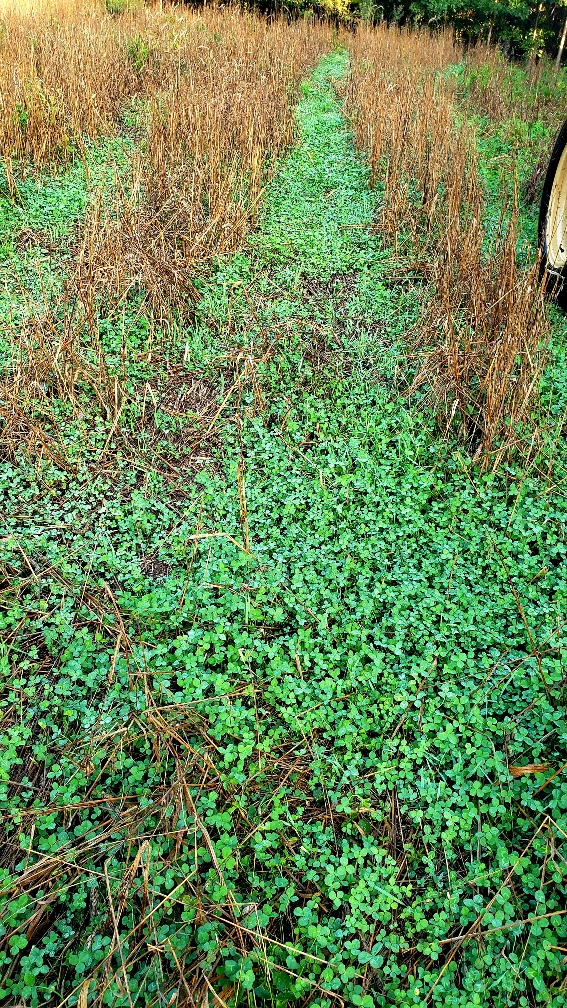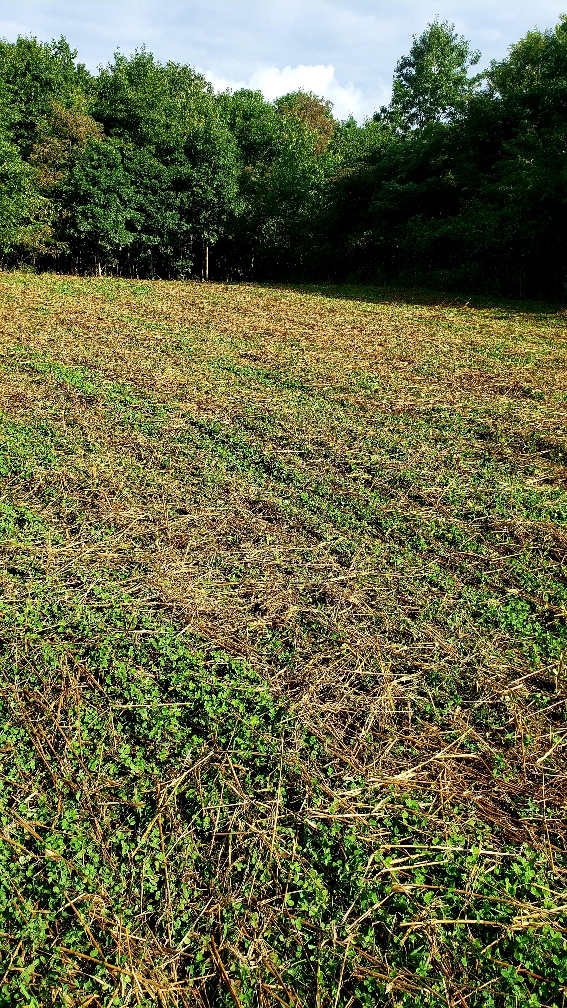4 years ago a locally renowned forester told me that I have the nicest plot of Ladino Clover that he has ever seen. My heart was filled with pride, and I decided that growing clover was the easiest plot species that there is. In fact, growing clover was so easy that I just totally stopped buying fertilizer for several plots, since it seemed like a waste of money if clover is such an easy crop to grow. My thought process followed a popular food plot myth that no crop is being removed from a food plot because the deer are replacing the nutrients they consume with deer droppings.
However, after 3 full years of growing those clover plots without fertilizer I have been brought to my knees and humbled in the worst way possible. After three years of no fertilizer, what was my best number one award winning clover plot before, is a total failure now, even though I have applied my best efforts to keep it alive, other than applying fertilizer of course, since I was doing this as a test to see if fertilizer is really necessary, and how long I can keep clover going without fertilizer, and I admit that I was totally convinced that i could keep these plots going indefinitely without applying any fertilizer.
Well, the end result has come in. In spite of my best efforts, this plot is totally up in weeds with very little clover. So I have to admit that I will have to change my philosophy on growing clover, since, on the first post of this thread I stated: fertilizer for clover is important, but not my top priority. (edited now to say top priority)
My new philosophy for growing clover reads like this: #1; Anyone can grow clover if they have 0-20-20 fertilizer.
#2; Even expert farmers will have difficulty growing clover if they don't have 0-20-20 fertilizer.
I have over a dozen clover plots on 5 different properties in 3 different counties, and I only did the no fertilizer experiment on some of them, and there is a clear pattern of connection between the lack of fertilizer application and the planted clover fading out.
I tried alternating multiple different herbicides, but the weeds still took over. Out of desperation to get ahead of the weeds and save the one plot I tank mixed several clover herbicides together, and killed everything! I frost seeded and interseeded fresh seed, but the bare spots persisted.
I drilled small grains into the plots to scavenge nutrients and smother weeds. This actually worked to a degree on one plot and shows a lot of potential, but it needs to be very intensive, done at least twice a year, and the failed plots were only seeded with grain once a year or less. I don't think that seeding small grain into clover can be a total replacement for fertilizer, but I believe it can be a valuable tool to reduce the amount of fertilizer needed, and the cost of the small grain seeding can be recouped in the dollar value of the fertilizer savings, plus getting the soil building properties and wildlife feeding values of the grain for free as a bonus.
So, along with a yearly dose of herbicide, lime to keep the ph around 6.8, and a twice a summer mowing, 200-400 lb per acre of 0-20-20 fertilizer (or whatever the soil tests call for) is VERY important to have a good stand of clover.
In the attached picture below there are three beautiful gobblers, standing on an ugly plot with no clover. This is still prime turkey habitat, but there's very little here for a deer, and the deer voiced their displeasure to me by going elsewhere for lunch. So, by default of no grazing vs intensive grazing when my plot was good, fertilizer does have a direct input in growing big antlers.
Sent from my SM-G965U using Tapatalk






